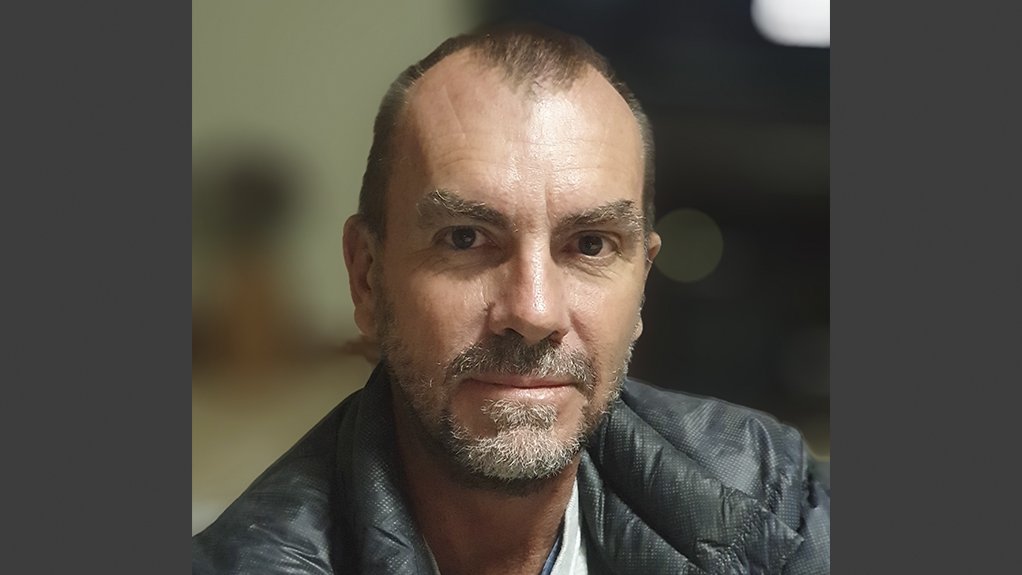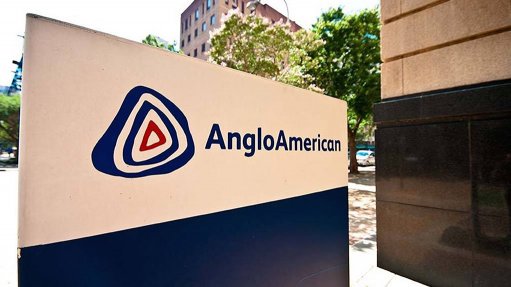Lack of energy, logistics challenges eroding emerging miners' profitability, viability
The significant electricity shortages in South Africa and the significant logistics constraints, especially for bulk commodities, are eroding junior and emerging miners' profitability, with some having to close down as they cannot afford or sustain their operations through the use of generators.
These were some of the views of junior mining companies and industry organisation representatives during a webinar hosted by Minerals Council South Africa on May 5.
Industry body the Aggregate and Sand Producers Association of Southern Africa's (Aspasa's) members had small mines and, although it varied, many could not necessarily afford the generators to run their operations, and many small-scale mines had closed, said Aspasa CEO Letisha van den Berg.
"Many smaller mines are trying to do innovative things, like doing maintenance during longer loadshedding periods rather than closing during December, and some smaller mines having erected solar projects.
"The industry is also engaging the Department of Mineral Resources and Energy and [State-owned] Eskom to see how we can contribute to generation because, if we, as offtakers, can develop solar in partnership with entities that can invest in the development of generation, this can positively impact on the mines and communities and reduce demand on the grid," she said.
The profit margins for members of industry body the South African Diamond Producers Organisation (Sadpo), typically mining in ultra low-grade alluvial, were generally between 5% and 7%. The costs to run operations on diesel generators could be up to 40% of the total costs and the industry had moved to using Eskom power, leading to savings of about 5% of total monthly costs, said Sadpo vice chairperson Lyndon de Meillon.
"Now that Eskom is not reliable, our members are again looking at running generators from time to time. However, the cost implications are not necessarily straightforward, because it can take about one hour per shift to switch operations over to generators," he said.
Meanwhile, its members are also running sophisticated machinery, such as X-ray machines and scanners, which are being damaged by the worsening quality of power dispatched by Eskom, with these machines being reduced to half their normal lifespan, which adds further costs.
"All these factors have now led to our members seeing an increase of about 10% in monthly costs instead of the 5% savings they had achieved before by relying on Eskom power," he highlighted.
With the average profit margins of the industry, many mines were finding it difficult to survive, he emphasised.
"Further, our members tend to use lots of energy on site, using about 1 MVA per site. Getting this amount of energy from solar plants is not viable. Many members' sites are typically mobile, and this means that solar plants are not an option, and these operations must put generators in place.
"For many, this move is too expensive, and we have seen some mines being closed. This is a big problem and creates unemployment, especially when considering that our members operate in rural areas where the unemployment rate is typically double the national rate, at around 75% to 80% unemployment. This deeply impacts on these communities," said De Meillon.
Another core challenge was the unpredictability of loadshedding. Sometimes, power was not switched off when it was communicated as such, with the mines switching off or switching over to generators while there was still power available. The converse problem was when loadshedding was implemented outside of the communicated times, he added.
Individual companies were also keenly feeling the deficits in energy security and bulk commodity logistics, with junior coal miner Vuna Group having to mothball its new underground operation at the Vuna Colliery, as it was dependent on power from Eskom, and focus instead on the opencast portion of the mine, said Vuna Group executive director Crause Mabudafhasi.
"We were forced to close the underground operation we had started, as we found ourselves unable to supply sufficient energy to the underground operation. Additionally, our external coal washing service provider was also impacted by loadshedding, which was starting to affect our production," he highlighted.
"We had to tap our contingency budget to invest in a crushing plant on site so that we would not have to depend on an outside party.
"We also cut production. We used to produce about 60 000 t a month, and are now, and only from opencast, producing 40 000 t a month owing to energy and logistics challenges," he said.
Similarly, local low-cost chrome producer Chrom Tech had been lucky to manage its way through the challenges, although the solar plants and diesel generators solutions came at an extreme cost, said Chrom Tech CEO Jono Gay.
"Currently, we are fortunate that the high commodity prices have supported us and we can absorb the additional costs. When the prices return to lower levels, we will have to take a specific decision on whether we will be able to operate or not.
"The real impact of the energy and logistics crises stretches far beyond only inflating the costs of operations," he emphasised.
All the additional capital requirements to fund solutions to the energy and logistics crises, such as own generation and transporting product by road, eroded profitability. This eroded the balance sheet, which could have been leveraged to invest in future projects or expansions and instead led to companies trying to survive in a smaller space than growing into a bigger space, he highlighted.
BULK LOGISTICS
Meanwhile, Van den Berg illustrated the impact of constrained logistics on the sector by highlighting the impact constrained rail logistics had on cement producers in South Africa.
During the early 2000s, cement producers struggled to move their products in bulk to readymix production sites, with some waiting up to three months to move product by rail. This challenge led to cement producers using trucks to transport product via roads, which added costs and led to road deterioration.
"This is why much of South Africa's cement is currently imported, as the price of cement relates to energy and logistics. Road transport is a big challenge for our members, and we do not have a solution," she said.
Similarly, Vuna was heavily impacted by the lack of rail logistics capacity, as it exported all its coal, said Mabudafhasi.
"We used to get an average of about six trains a month. By the end of [2022], we were getting an average of one to two trains a month. Therefore, we had to resort to road transportation to close the gap left by [State-owned] Transnet's lack of service," he highlighted.
The use of road transportation has also impacted on its bottom line, as road transportation costs are much higher than rail.
"This year, we have decided to further reduce production to 30 000 t a month, as we decided not to increase our stockpiles without having any idea of when trains will come and there being no consistency to plan around. This [reduced production] is also affecting our turnover and profitability," said Mabudafhasi.
Additionally, the chrome sector was allocated 8.6-million tonnes on the rail corridors in 2022, but less than 4.5-million tonnes was moved by rail. Total demand was around 14-million tonnes a year, with less than 5-million tonnes moved by rail and the rest by road, said Gay.
"We need collective solutions, and public-private partnerships (PPPs), because many companies will not be able to overcome the challenges alone," he emphasised.
Further, the chrome and ferrochrome sector were in conversation with Transnet executives, and the information about the specific challenges in the freight rail sector was becoming more transparent, which was welcomed by industry as this helped to provide details about the challenges and the potential solutions, he noted.
However, he emphasised that even PPPs cannot offer quick solutions, with new locomotives taking 24 months to be manufactured and imported.
"While there remains some resistance in government and State-owned organisations to the general privatisation that the private sector wants, the reality is that the issue is beyond the control of the Transnet executives.
"To make progress, we need to relook at the model and the way things work," he emphasised.
Comments
Press Office
Announcements
What's On
Subscribe to improve your user experience...
Option 1 (equivalent of R125 a month):
Receive a weekly copy of Creamer Media's Engineering News & Mining Weekly magazine
(print copy for those in South Africa and e-magazine for those outside of South Africa)
Receive daily email newsletters
Access to full search results
Access archive of magazine back copies
Access to Projects in Progress
Access to ONE Research Report of your choice in PDF format
Option 2 (equivalent of R375 a month):
All benefits from Option 1
PLUS
Access to Creamer Media's Research Channel Africa for ALL Research Reports, in PDF format, on various industrial and mining sectors
including Electricity; Water; Energy Transition; Hydrogen; Roads, Rail and Ports; Coal; Gold; Platinum; Battery Metals; etc.
Already a subscriber?
Forgotten your password?
Receive weekly copy of Creamer Media's Engineering News & Mining Weekly magazine (print copy for those in South Africa and e-magazine for those outside of South Africa)
➕
Recieve daily email newsletters
➕
Access to full search results
➕
Access archive of magazine back copies
➕
Access to Projects in Progress
➕
Access to ONE Research Report of your choice in PDF format
RESEARCH CHANNEL AFRICA
R4500 (equivalent of R375 a month)
SUBSCRIBEAll benefits from Option 1
➕
Access to Creamer Media's Research Channel Africa for ALL Research Reports on various industrial and mining sectors, in PDF format, including on:
Electricity
➕
Water
➕
Energy Transition
➕
Hydrogen
➕
Roads, Rail and Ports
➕
Coal
➕
Gold
➕
Platinum
➕
Battery Metals
➕
etc.
Receive all benefits from Option 1 or Option 2 delivered to numerous people at your company
➕
Multiple User names and Passwords for simultaneous log-ins
➕
Intranet integration access to all in your organisation




















